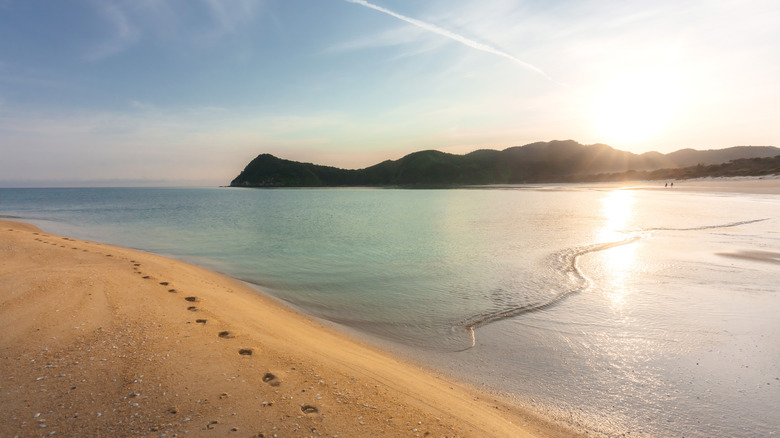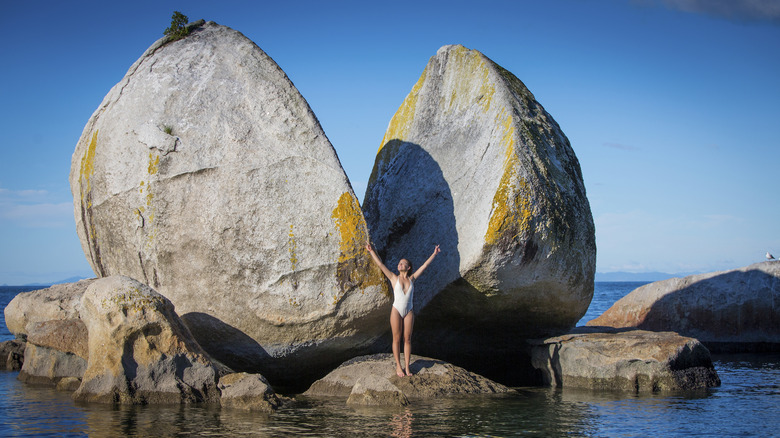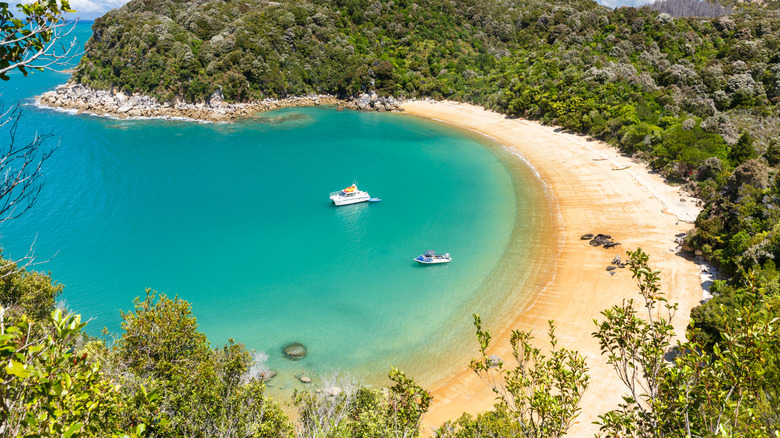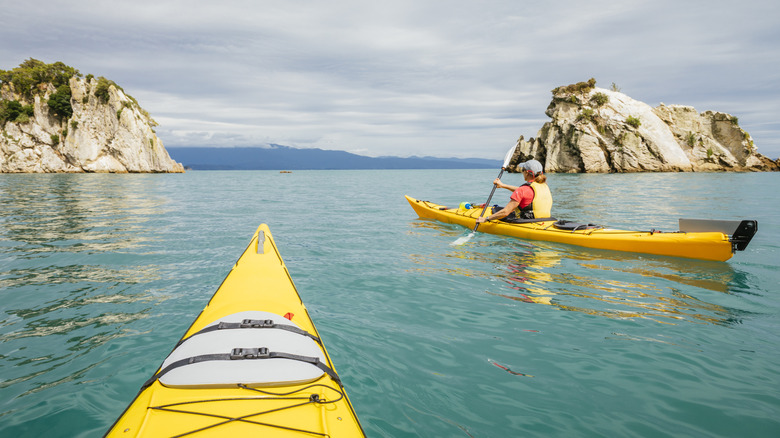New Zealand's Smallest National Park Is An 'Easily Accessible Coastal Paradise' With Unmatched Views
From hobbit-filled tales to rolling hills with more sheep than humans, New Zealand is a destination of endless marvels that ignite curiosity and wanderlust. Among its unspoiled landscapes, Abel Tasman National Park is a crown jewel that stands out from the crowd. While many prefer to visit the mesmerizing South Island — known as one of the safest in the world — or sip on luxurious wine at Waiheke Island as they relax on pristine beaches, this easily accessible coastal paradise draws in people who wish to experience nature at its finest. Despite covering just 91.5 square miles (it's the smallest national park in New Zealand), Abel Tasman National Park has everything you need for a peaceful retreat and a chance to recharge.
Long before European settlement, Abel Tasman National Park was home to Māori who lived along its shores for more than 500 years. They relied on resources like kumera, seafood, and native forests for sustenance. Everything changed when Dutch explorer Abel Tasman arrived in 1642. After docking in Golden Bay, a violent encounter with the Ngāti Tūmatakōkiri people led to the loss of several crew members. This marked the beginning of European contact, which forever changed the way of life for Māori. Settlers wasted no time exploiting the land, logging forests, and building ships. But it was only a matter of time before their actions began to show the consequences. As the damage became clear, the need for a conservation campaign grew, which culminated in establishing Abel Tasman National Park in 1942.
Prominent rocks, crystal waters, and marine life galore
Make Split Apple Rock the starting point of your trip. Whether you kayak there or walk at low tide, this is a chance to see the park's unique geology. Also known as Tokangawhā, this rock formation is a true icon of Abel Tasman National Park. Just as the name implies, the natural wonder looks like an apple cleanly sliced in half. Many scientists have theories and explanations for the rock's distinct appearance, but Māori legend offers a more fascinating take. The story goes that two gods were locked in a fierce struggle over the boulder and decided the solution was to break it in half.
If you've ever dreamed of bathing like a queen, Cleopatra's Pools are the place to make that a reality. These rock pools are the best place to indulge in nature's own water slide, where you can glide down a mossy chute into the refreshing waters below. The water here is usually cold but manageable — if you like to keep your feet dry, find a large rock to sit back and relax by the pools.
Another must-see spot at Abel Tasman National Park is Tonga Island Marine Reserve. This place is an underwater wonderland, rich with pink algae, crayfish, turban shells, seals, and even penguins that are always a delightful surprise. With more than enough sandy stretches, rocky headlands, and colorful reefs to discover, every nook and cranny here is one of a kind.
Secret beaches, breathtaking waterfalls, and abundant wildlife await
A genuine showstopper in Abel Tasman is Wainui Falls, standing at 66 feet and cascading powerfully into a gaping pool below. As the largest of its kind in the national park, this majestic waterfall is a sight to behold. You may find the water too chilly for a swim, but don't worry — opt for the plunge pool during the warmer months if you really want to take a dip. Be careful around the rocks, though — they can get very slippery.
Separation Point, sitting at the northern edge of the national park, offers one of Abel Tasman's most scenic panoramas. Here, you get to stroll along stunning sandy beaches and expansive green foliage while seabirds fly overhead. The best part about this area is the chance to see seals lounging on the rocks. On your way to Separation Point, you'll encounter punga trees, Australasian gannets, vibrant manuka, and flitting fantails. Despite this place being a wildlife haven, dogs are, unfortunately, not allowed, so you'll have to enjoy the sweeping views without your four-legged friend.
Those in need of solitude can make their way to Stilwell Bay, a secluded area where you can truly disconnect. With clear, gentle waters lapping the shore, this is a great spot to swim or have a picnic. You'll find yourself alone in this hidden gem, with turquoise waters and hardly any visitors. Take your time to soak in the natural beauty and watch the seagulls play along the sandbar.
Trek, dive, and paddle through serene landscapes
Abel Tasman National Park is as packed with adventure as it is with splendor. For every spectacular scenery, there's an equally thrilling activity to match. Sea kayaking here is legendary, whether you're paddling along secluded shores or navigating the waters during sunset. Those craving a bit more adrenaline can try canyoning. You can jump, swim, slide, and even zipline through the national park's canyons and experience the place from a new angle.
One of the most popular hiking trails here is the Abel Tasman Coast Track because it takes you to almost all of the incredible spots mentioned. Guiding you through lush forests and golden beaches, the trail spans 37 miles one way and can be tackled in its entirety in three to 5 days. You can switch up the hike with water taxis and kayaks to cover different sections. Along the way, you'll cross a suspension bridge, spot seals hanging out by the shore, and observe the emerald waters of the striking Mutton Cove.
You can take your Abel Tasman escapades further by heading to the area between Tonga Quarry and Foul Point, where you'll find some of the best snorkeling. Swim alongside red rock crabs, snapper, and hermit crabs while they move through rocky crevices. If diving is more of your thing, the reefs surrounding Tonga Island offer magical encounters with sea creatures. There's a right way to spend a 10-day vacation in New Zealand, including stops in Auckland and Queenstown; just don't forget to make time for Abel Tasman National Park!



